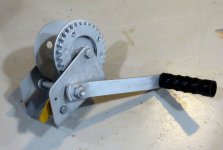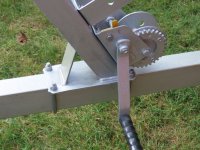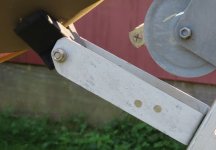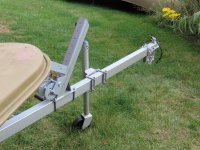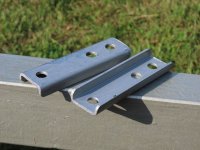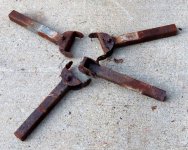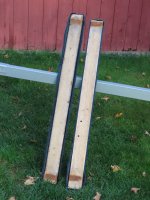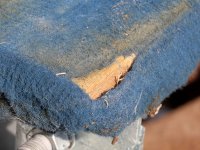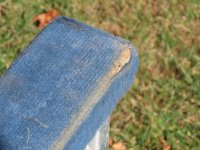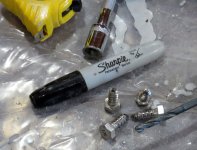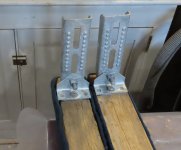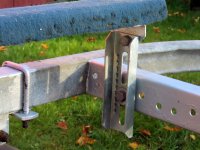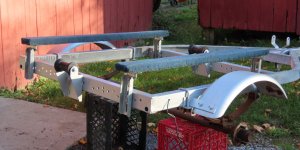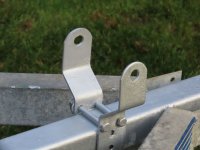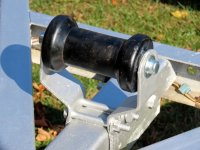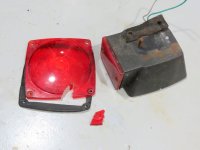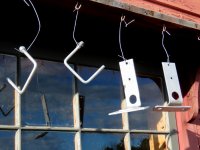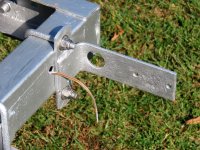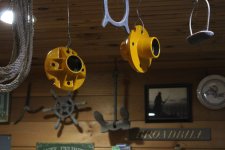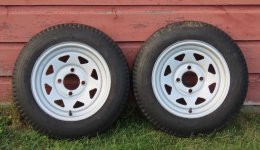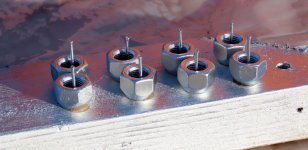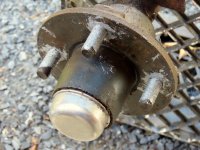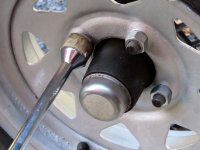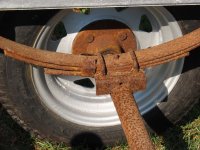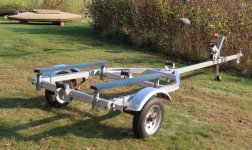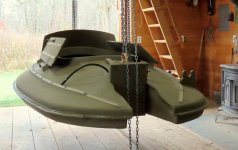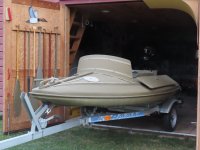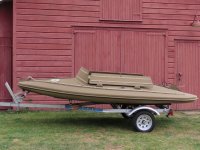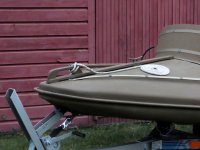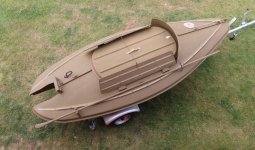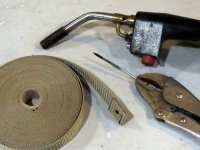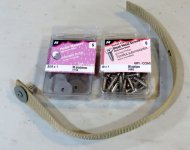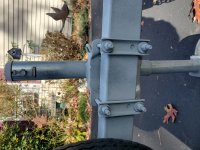Steve Sanford
Well-known member
Good morning, All~
The title of this thread came fom Jode Hillman at Tuckerton this year. I believe I had posted here about the merits of TrailerCoat - now RustLok - a Pettit brand paint originally made for galvanized trailers. I have been using it for over 30 years. I hauled the JAMES CAIRD down to Barnegat Bay for the 42nd Annual Old Time Barnegat Bay Decoy & Gunning Show. Shortly after arriving, Jode came over to say Hello and to ask about that trailer paint....
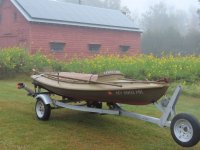
Like anyone who has trailed small craft around for any reason, Jode knew first-hand the importance of a sound and reliable trailer. And, if it looks ell-cared-for, too, that's not a bad thing.
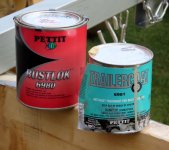
As usual, I have a few vessels in the yard that have been commanding my attention of late. The most recent one in the COMPLETED column is this South Bay Duckboat for a gunner on Oyster Bay - a nice little village on Long Island's North Shore - and once the home of Teddy Roosevelt.
I did not take a full suite of BEFORE photos, but here is how she began the journey through Pencil Brook Boatworks... Both boat are trailer were fundamentallty sound - but notice how the vessel sits nose-high on her transport.
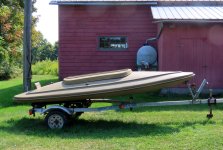
The winch stand arrangement put the bow higher than it should be. I prefer that the hull sit level on the bunks. And there was serious rust in all the usual places - especially the appurtenances like the winch and jack stand. Note, too, those "one-size-fits-all" cleats on the jack stand - a longstanding "peeve" with me.
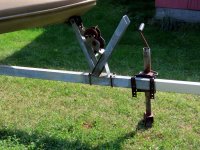
The two posts would work fine with a "normal" boat that had a high bow - but not for a low-slung "grassboat" like the South Bay.
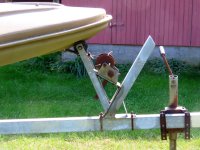
The "demolition" commenced with the usual batch of products. I have become a fan of this rust-seeker-and-destroyer in recent years. Evey suspect fastener got a liberal dose - and sometimes repeatedly over the days.
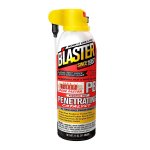
All the usual helpers played their roles. The Prep & Etch is phosphoric acid - same as Coca-Cola.....
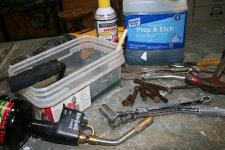
The first victim was the coupler - which was removed and enjoyed a full-immersion bath in the (diluted 50:50) acid - overnight. I went ahead and painted the tongue - with the TrailerCoat I still had on hand. My shop was not ready to take the boat itself, so I began work on the trailer in piecemeal (haphazard?) fashion. I did get the jack stand to work - thanks to the solvents - but ultimately decided to put a new one on instead.
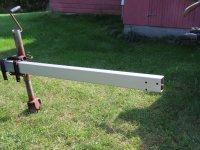
Amy rehab is all about attention to every detail....
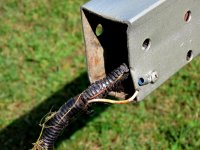
So, the ground wire got a new connection (and later the entire wiring harness got replaced).
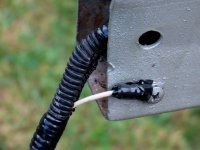
As a general rule, I upgrade trailer fasteners to stainless and always apply anti-seize to threads. Most nuts become s/s Nylocs.
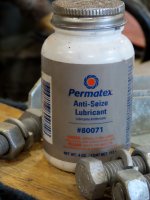
I bedded the restored coupler in caulk to prevent water/moisture hiding in the crevices. The couple was painted thoroughly with TrailerCoat before re-installation and lubrication.

The "block" on the underside got the same treatment.
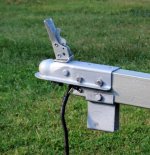
The safety chains were acid-bathed the painted with just silver spay paint. The TrailerCoat is a bit too heavy for loose and moving parts like chain links.
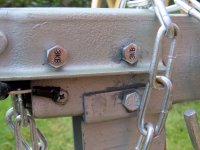
So, the "bow" of the trailer is all done.
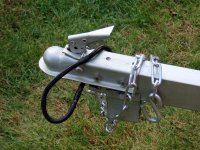
Stay tuned....
SJS
The title of this thread came fom Jode Hillman at Tuckerton this year. I believe I had posted here about the merits of TrailerCoat - now RustLok - a Pettit brand paint originally made for galvanized trailers. I have been using it for over 30 years. I hauled the JAMES CAIRD down to Barnegat Bay for the 42nd Annual Old Time Barnegat Bay Decoy & Gunning Show. Shortly after arriving, Jode came over to say Hello and to ask about that trailer paint....

Like anyone who has trailed small craft around for any reason, Jode knew first-hand the importance of a sound and reliable trailer. And, if it looks ell-cared-for, too, that's not a bad thing.

As usual, I have a few vessels in the yard that have been commanding my attention of late. The most recent one in the COMPLETED column is this South Bay Duckboat for a gunner on Oyster Bay - a nice little village on Long Island's North Shore - and once the home of Teddy Roosevelt.
I did not take a full suite of BEFORE photos, but here is how she began the journey through Pencil Brook Boatworks... Both boat are trailer were fundamentallty sound - but notice how the vessel sits nose-high on her transport.

The winch stand arrangement put the bow higher than it should be. I prefer that the hull sit level on the bunks. And there was serious rust in all the usual places - especially the appurtenances like the winch and jack stand. Note, too, those "one-size-fits-all" cleats on the jack stand - a longstanding "peeve" with me.

The two posts would work fine with a "normal" boat that had a high bow - but not for a low-slung "grassboat" like the South Bay.

The "demolition" commenced with the usual batch of products. I have become a fan of this rust-seeker-and-destroyer in recent years. Evey suspect fastener got a liberal dose - and sometimes repeatedly over the days.

All the usual helpers played their roles. The Prep & Etch is phosphoric acid - same as Coca-Cola.....

The first victim was the coupler - which was removed and enjoyed a full-immersion bath in the (diluted 50:50) acid - overnight. I went ahead and painted the tongue - with the TrailerCoat I still had on hand. My shop was not ready to take the boat itself, so I began work on the trailer in piecemeal (haphazard?) fashion. I did get the jack stand to work - thanks to the solvents - but ultimately decided to put a new one on instead.

Amy rehab is all about attention to every detail....

So, the ground wire got a new connection (and later the entire wiring harness got replaced).

As a general rule, I upgrade trailer fasteners to stainless and always apply anti-seize to threads. Most nuts become s/s Nylocs.

I bedded the restored coupler in caulk to prevent water/moisture hiding in the crevices. The couple was painted thoroughly with TrailerCoat before re-installation and lubrication.

The "block" on the underside got the same treatment.

The safety chains were acid-bathed the painted with just silver spay paint. The TrailerCoat is a bit too heavy for loose and moving parts like chain links.

So, the "bow" of the trailer is all done.

Stay tuned....
SJS


